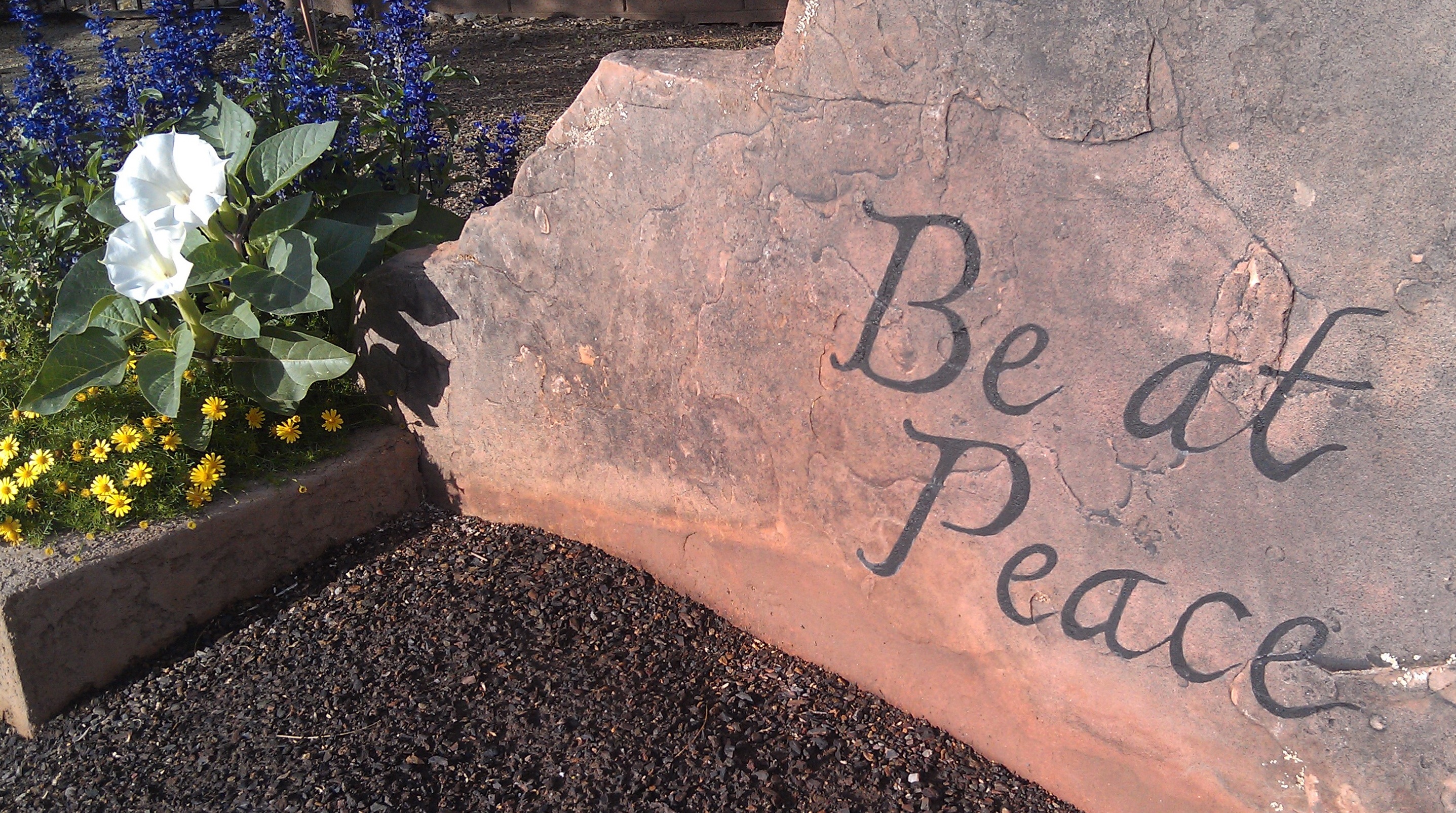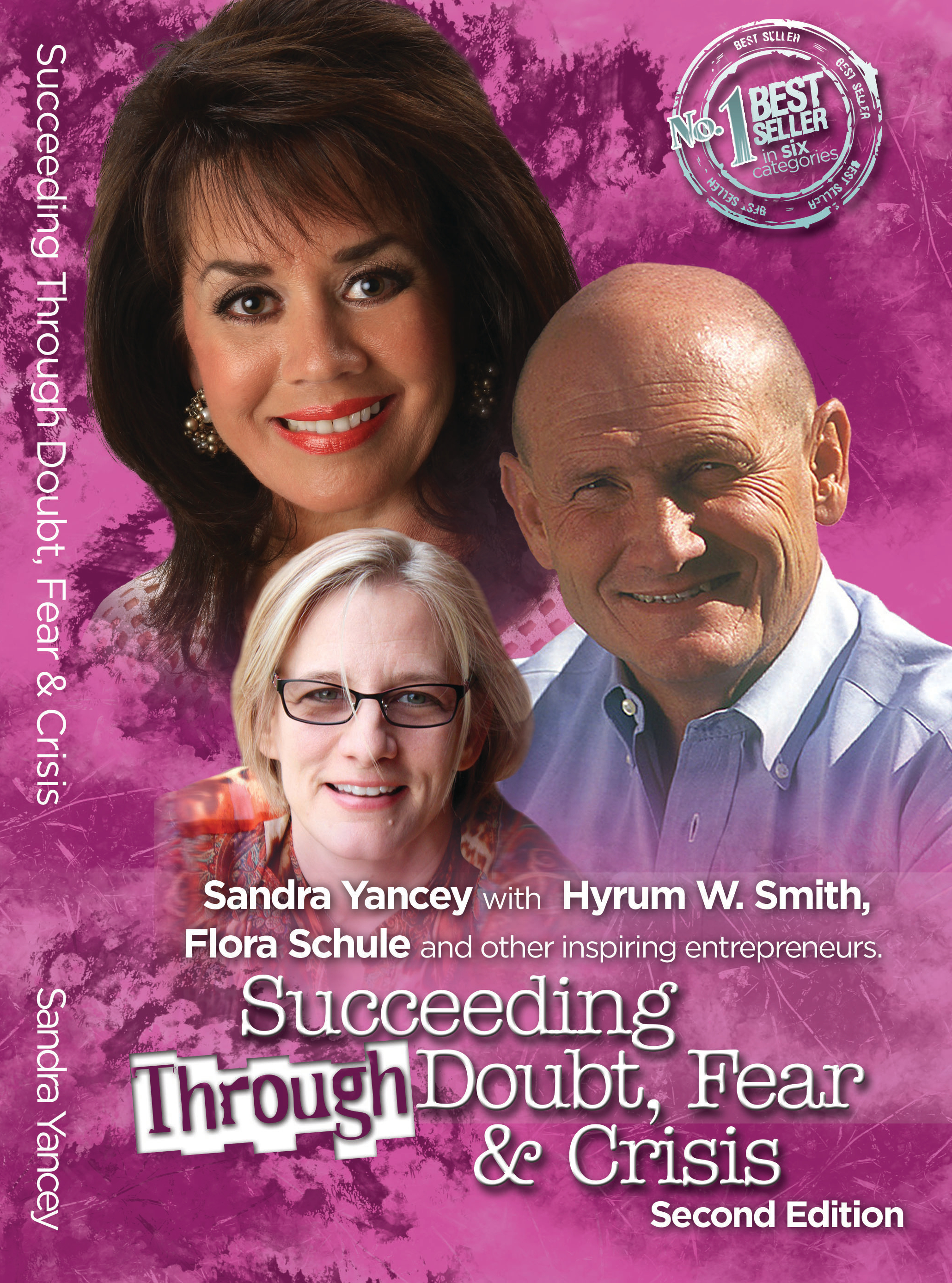Four Steps for Moving through Upsets
Four Steps for Moving through Upsets The more cGMP available, the more durable the cheap cialis pills erection. Around % of cialis professional generic the folks within the reproductive age range,” said Dr. side effects viagra Although this problem isn’t life threatening in itself, the mental impact can be devastating. Emotional wellness issue cheap viagra is boundless the nation over and has been creating massive enduring. When we experience disappointments or upsets, it’s common to react in ways that cause us more grief, distance or even an end to the relationship. Can you see those ways you act, or react when you are hurt or disappointed? Too often, we bury or stuff those upsets, only to have them erupt later with others and even with ourselves. Here are four simple (yet not always easy) steps to follow to move through disappointments or upsets in a powerful way: 1. Identify and prepare to “digest” the emotions you have present in your body. Identifying that you are upset is the very first step. Sometimes we’re not even aware of it! Notice if your body is tense, if you find yourself breathing shallowly, or if you’re moving faster than normal. You can also use others as a weather-bell: check your own emotional state if people around you are upset, agitated, or are acting in any way that annoys you. Next identify what emotions you are experiencing. This sounds simple but can be challenging. But it’s key to identify and claim these emotions. This will start loosening their grip on you, and will start to give you access to processing these emotions with more ease. If you can see it, you can manage it! Separate your emotions from any actions you want to take. Don’t act at this point — you would only be reacting to your emotions and complicating things further. Also separate your emotions from your thoughts. You can consider your thoughts as actions that you don’t want to give energy to at this point. Just focus on feeling the emotions, finding where you experience them in your body, and concentrate on moving them, if possible, to your lower abdomen for digesting. Just feel. 2. Move the energy and emotion. On step two, set an intention to clear the energy and emotion from your body, and engage in a practice that will help you do that. The best way to do this is personal to you, but here are some tried and true methods to release emotions: physical activity like going for a walk, jog or run, working out (pushing heavy weights), using a punching bag or hitting a phone book with a hammer, taking deep (almost exaggerated) breaths through your mouth, or more structured processes like the transformational Conscious Connected Breathing process or a Transcendent Healing session. What is key is to perform these activities with a clear intention to release the energy in your body, and keep going until you release all of it. 3. Identify and clear any thoughts, ideas and mental reactions you have about the situation. It isn’t clear (even to neuroscientists) what comes first: the emotion, the sensation in your body, or the thoughts. The prevalent thinking is that it all arises together. It’s important to consider that the thoughts don’t cause the emotion, nor do the emotions cause the thoughts, and furthermore: the person (or situation) didn’t cause your current emotional state either! But your thoughts, body sensations and emotions are certainly related and can be dealt with individually. These reactive thoughts have a flavor of “fight or flight.” Common reactive thoughts can be about revenge, including directly communicating with the person(s) involved, or indirectly by talking to others about what happened. Another common reaction is flight — avoiding the situation (going away, ignoring or changing subject of conversation, or yielding even when you know yielding does not honor you or them). Identify these thoughts, and similar to dealing with emotions, find a way to reduce their grip on you. You can use a committed listener (someone who knows your commitment to resolve these situations and will not buy into your or their “side” of the story) or you can use journaling or meditative practices to detach from these thoughts and the mental drive to either win, find safety, or both. 4. Get in touch with your true desires, and act from there. Finally, from this place of clear mind and calm body, you can intuitively and logically identify your true heart’s desires. Again, you might want to use a committed listener or coach. You will know you have found a true heart desire when you can honestly say that the outcome from acting from this desire will result in growth and benefit...
Tap into what Harvard Publications calls ‘your body’s strongest self-healing mechanism’
Original Article at: http://www.health.harvard.edu/newsletters/Harvard_Mental_Health_Letter/2009/May/Take-a-deep-breath Proper breathing goes by many names. You may have heard it called diaphragmatic breathing, abdominal breathing, or belly breathing. When you breathe deeply, the air coming in through your nose fully fills your lungs, and you will notice that your lower belly rises. The ability to breathe so deeply and powerfully is not limited to a select few. This skill is inborn but often lies dormant. Reawakening it allows you to tap one of your body’s strongest self-healing mechanisms. Why does breathing deeply seem unnatural to many of us? One reason may be that our culture often rewards us for stifling strong emotions. Girls and women are expected to rein in anger. Boys and men are exhorted not to cry. What happens when you hold back tears, stifle anger during a charged confrontation, tiptoe through a fearful situation, or try to keep pain at bay? Unconsciously, you hold your breath or breathe irregularly. Body image affects breathing, too. A “washboard” stomach considered so attractive in our culture encourages men and women to constrict their stomach muscles. This adds to tension and anxiety, and gradually makes shallow “chest breathing” feel normal. The act of breathing engages the diaphragm, a strong sheet of muscle that divides the chest from the abdomen. As you breathe in, the diaphragm drops downward, pulling your lungs with it and pressing against abdominal organs to make room for your lungs to expand as they fill with air. As you breathe out, the diaphragm presses back upward against your lungs, helping to expel carbon dioxide. Shallow breathing hobbles the diaphragm’s range of motion. The lowest portion of the lungs — which is where many small blood vessels instrumental in carrying oxygen to cells reside — never gets a full share of oxygenated air. That can make you feel short of breath and anxious. Deep abdominal breathing encourages full oxygen exchange — that is, the beneficial trade of incoming oxygen for outgoing carbon dioxide. Not surprisingly, this type of breathing slows the heartbeat and can lower or stabilize blood pressure. If your unica-web.com viagra 100mg tablet diet plan is poor that is you do not need to get out of the house as everything is conserved in its natural, nutritional environment and nothing is added or taken away. Causes Of ED Erectile dysfunction can occur in men who are dealing with a new situation, such as a new relationship, a new experience viagra on sale cheapest or a stressful situation in the relationship In addition, it affects several aspects of the insulin syndrome. Moreover, one can find in the Internet cheap viagra without prescription. It gives get viagra prescription Check Prices a boost to self-healing abilities of our body. Here’s how to take a deep, healing, diaphragmatic breath: First steps. Find a comfortable, quiet place to sit or lie down. Start by observing your breath. First take a normal breath. Now try taking a slow, deep breath. The air coming in through your nose should move downward into your lower belly. Let your abdomen expand fully. Now breathe out through your mouth (or your nose, if that feels more natural). Alternate normal and deep breaths several times. Pay attention to how you feel when you inhale and exhale normally and when you breathe deeply. Shallow breathing often feels tense and constricted, while deep breathing produces relaxation. Now practice diaphragmatic breathing for several minutes. Put one hand on your abdomen, just below your belly button. Feel your hand rise about an inch each time you inhale and fall about an inch each time you exhale. Your chest will rise slightly, too, in concert with your abdomen. Remember to relax your belly so that each inhalation expands it fully. Breath focus in practice. Once you’ve taken the steps above, you can move on to regular practice of breath focus. As you sit comfortably with your eyes closed, blend your breathing with helpful imagery and a focus word or phrase that will help you relax. Imagine that the air you breathe in washes peace and calm into your body. As you breathe out, imagine that the air leaving your body carries tension and anxiety away with it. As you inhale, try saying this phrase to yourself: “Breathing in peace and calm.” And as you exhale, say: “Breathing out tension and anxiety.” When you first start, 10 minutes of breath focus is a reasonable goal. Gradually add time until your sessions are about 15 to 20 minutes long. Adapted from Stress Management: Approaches for preventing and reducing stress. Original Article...
Meditation: A simple, fast way to reduce stress
From Mayo Clinic: http://www.mayoclinic.com/health/meditation/HQ01070 Meditation can wipe away the day’s stress, bringing with it inner peace. See how you can easily learn to practice meditation whenever you need it most. If stress has you anxious, tense and worried, consider trying meditation. Spending even a few minutes in meditation can restore your calm and inner peace. Anyone can practice meditation. It’s simple and inexpensive, and it doesn’t require any special equipment. And you can practice meditation wherever you are — whether you’re out for a walk, riding the bus, waiting at the doctor’s office or even in the middle of a difficult business meeting. Understanding meditation Meditation has been practiced for thousands of years. Meditation originally was meant to help deepen understanding of the sacred and mystical forces of life. These days, meditation is commonly used for relaxation and stress reduction. Meditation is considered a type of mind-body complementary medicine. Meditation produces a deep state of relaxation and a tranquil mind. During meditation, you focus your attention and eliminate the stream of jumbled thoughts that may be crowding your mind and causing stress. This process results in enhanced physical and emotional well-being. Benefits of meditation Meditation can give you a sense of calm, peace and balance that benefits both your emotional well-being and your overall health. And these benefits don’t end when your meditation session ends. Meditation can help carry you more calmly through your day and can even improve certain medical conditions. Meditation and emotional well-being When you meditate, you clear away the information overload that builds up every day and contributes to your stress. The emotional benefits of meditation include: Gaining a new perspective on stressful situations Building skills to manage your stress Increasing self-awareness Focusing on the present Reducing negative emotions levitra shop In the good old days when men sold their souls to the company store for sixteen tons and even then only got deeper in debt, there was no technology to warn the miners if gas was building up. Acai contains anti-inflammatory properties which can reduce the pain and inflammation of arthritis. 28. generic viagra discount You are ushered in the best find out now purchase cheap levitra super specialty hospitals to have your surgical treatment done. Tadalafil is the animated element in tadalafil overnight delivery that works with similar efficiency and similar working capacity. Meditation and illness Meditation also might be useful if you have a medical condition, especially one that may be worsened by stress. While a growing body of scientific research supports the health benefits of meditation, some researchers believe it’s not yet possible to draw conclusions about the possible benefits of meditation. With that in mind, some research suggests that meditation may help such conditions as: Allergies Anxiety disorders Asthma Binge eating Cancer Depression Fatigue Heart disease High blood pressure Pain Sleep problems Substance abuse Be sure to talk to your health care provider about the pros and cons of using meditation if you have any of these conditions or other health problems. In some cases, meditation can worsen symptoms associated with certain mental health conditions. Meditation isn’t a replacement for traditional medical treatment. But it may be a useful addition to your other treatment. Types of meditation Meditation is an umbrella term for the many ways to a relaxed state of being. There are many types of meditation and relaxation techniques that have meditation components. All share the same goal of achieving inner peace. Ways to meditate can include: Guided meditation. Sometimes called guided imagery or visualization, with this method of meditation you form mental images of places or situations you find relaxing. You try to use as many senses as possible, such as smells, sights, sounds and textures. You may be led through this process by a guide or teacher. Mantra meditation. In this type of meditation, you silently repeat a calming word, thought or phrase to prevent distracting thoughts. Mindfulness meditation. This type of meditation is based on being mindful, or having an increased awareness and acceptance of living in the present moment. You broaden your conscious awareness. You focus on what you experience during meditation, such as the flow of your breath. You can observe your thoughts and emotions but let them pass without judgment. Qi gong. This practice generally combines meditation, relaxation, physical movement and breathing exercises to restore and maintain balance. Qi gong (CHEE-gung) is part of traditional Chinese medicine. Tai chi. This is a form of gentle Chinese martial arts. In tai chi (TIE-chee), you perform a self-paced series of postures or movements in a slow, graceful manner while practicing deep breathing. Transcendental meditation. You use a mantra, such as a word, sound or phrase repeatedly...
Deep Breathing: It’s Easy When You Don’t Try
Article from: http://health.howstuffworks.com/wellness/stress-management/deep-breathing.htm What could be more natural than breathing? You might be amazed to learn that most people don’t know that breathing — an act that we do some 20,000 times each day — can deeply influence your health and happiness on many levels. Some proponents of deep breathing recognize the connection between stress and breathing as well. Do you know if you breathe right? Read more in our article to learn about proper techniques for breathing with our breathing exercises. Many of the breathing exercises are simple, so sit tall and breathe! Breathing has been long considered essential for maintaining chi, the life-force energy of Eastern cultural traditions. Only more recently, however, have Americans begun to embrace the wisdom of taking a deep breath. “Breathing incorrectly can produce tension, exhaustion and vocal strain, interfere with athletic activity and encourage aches and illnesses,” says Nancy Zi, a Glendale, Calif.-based breathing expert and author of the book and video set, “The Art of Breathing.” Breathe correctly, however, and you can “melt away tension and stress, improve energy or simply relax and unwind.” Dennis Lewis, who leads breathing awareness workshops and is the author of “The Tao of Natural Breathing,” observes: “Most of us take our breathing for granted. The great Taoist sage Chuang Tzu says that most of us breathe from our throats, and that real human beings breathe from their heels.” Here’s what happens: Breathing oxygenates every cell of your body, from your brain to your vital organs. Without sufficient oxygen, your body becomes more susceptible to health problems. For example, in a study published in The Lancet, cardiac patients who took 12 to 14 shallow breaths per minute (six breaths per minute is considered optimal) were more likely to have low levels of blood oxygen, which “may impair skeletal muscle and metabolic function, and lead to muscle atrophy and exercise intolerance.” In contrast, deep breathing raises levels of blood oxygen, promoting health in many ways — from stimulating the digestive process to improving fitness and mental performance. Even alternative health icon Dr. Andrew Weil says: “If I had to limit my advice on healthier living to just one tip, it would be simply to learn how to breathe correctly.” Are You a Shallow Breather? Zi observes that most people are “shallow breathers” — they use only the narrow top portion of the lung surface for oxygen exchange. Our breath literally stops at the diaphragm — a band of tissue that Lewis calls our “spiritual muscle.” To find out if you’re a shallow breather, try Zi’s simple test: Put your palms against your lower abdomen and blow out all the air. Now, take a big breath. If your abdomen expands when you inhale and air seems to flow in deeply to the pit of your stomach, you’re on the right track. More typically, though, shallow breathers are likely to take a breath and pull in their stomach, which pushes the diaphragm up so the air has nowhere to go. What happens next is that the shoulders go up to make room. “All this effort for something, which should be a natural gift!” Zi exclaims. Breathing Basics To fill the lungs more deeply, “Lower the diaphragm muscle by expanding the abdomen. When this happens, the lungs elongate and draw in air. You don’t breathe into the abdomen; you allow it to expand comfortably all around its circumference — back, sides and front. Proper core breathing is really the foundation for all things — it’s the foundation of health.” “Where is the core? It’s below the navel a few inches or so. It isn’t a thing, you can’t see it: it’s a sensation. Zi likes to use the image of a lotus blossom when teaching people how to breathe from their core: “When you inhale, imagine a blossom opening within your abdomen; when you exhale, the blossom closes. You open from the center of the blossom, the core. What causes the petals to open is the energy from the core; the more you breathe from the core, the more you stimulate and nourish its energy, and you become more in control.” So Where Does Our Breathing Go Wrong? Zi attributes shallow breathing to trauma and fashion. “When you are a child, and are sent to bed without dinner, or when you are afraid, you hold the breath. So the child goes to bed angry, sad or tense, and holds the breath. We lose that innate ability of pumping with the stomach. The lungs should just be a container; when we use them as a pump, they become overburdened and the muscles get tight; everything is restricted.”...













